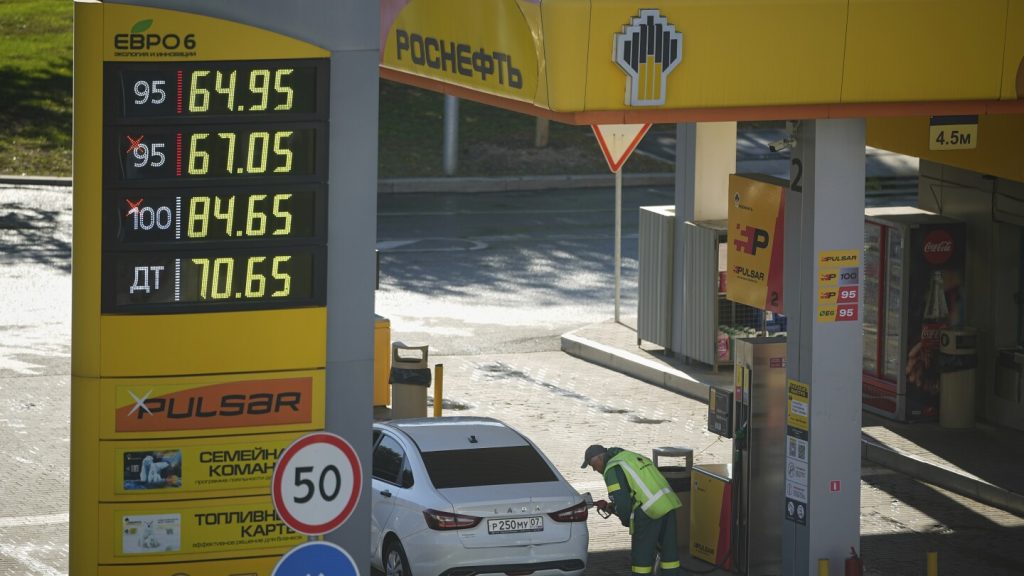WHY THIS MATTERS: Russia is accustomed to gasoline price increases and shortages during this time of year, coinciding with heightened demand from farmers and summer vacation travelers. However, the current shortages are largely attributed to Ukraine’s attacks on oil refineries over the past 3.5 years of war, directly affecting everyday consumers.
Some regions in Russia are facing gasoline shortages after recent drone strikes from Ukraine targeted refineries and oil facilities, leading to long lines at gas stations and measures such as rationing by officials.
Wholesale prices for A-95 gasoline surged to new heights last week on the St. Petersburg International Mercantile Exchange, nearing a 50% increase compared to January. This spike is fueled by the surge in demand from farmers and summer travelers.
Reports indicate that fuel shortages are particularly affecting consumers in the Far East and the Crimean Peninsula, annexed by Russia in 2014. In Primorye, bordering North Korea, gas prices reached 78 rubles per liter (around $3.58 per gallon), with some attempting to sell gasoline online for as much as 220 rubles per liter (approximately $10.12 per gallon).
Normal Price Increases Exacerbated This Year
While end-of-summer gasoline price increases are typical in Russia, this year’s situation is worsened by Ukraine’s impactful strikes on oil refineries. The concentrated attacks have hampered production, coinciding with peak demand periods.
Ukraine’s recent drone initiatives have been more effective, targeting multiple refineries in a narrower span. “The Ukrainians are focused on an area from Ryazan to Volgograd, a densely populated corridor traveled toward Black Sea resorts and ongoing harvest operations,” stated Sergey Vakulenko from the Carnegie Russia Eurasia Center.
Between August 2 and August 24, Ukraine executed at least 12 attacks on oil facilities, notably in the Ryazan-Volgograd region. These strikes have caused production slowdowns, with crude oil intake diminishing by approximately 200,000 to 250,000 barrels daily, significantly impacting gasoline supplies during summer’s high consumption months.
Moscow Relatively Unaffected by Shortages
Officials express concerns over the gasoline supply, though experts suggest the situation “isn’t system critical.” The shortages remain localized to specific areas, chiefly the Far East and Crimea, due to fewer refineries in those regions and greater logistical challenges.
Moscow has avoided the latest surge in gasoline prices due to its proximity to refineries in Yaroslavl and Nizhny Novgorod, as well as having its own refinery. Despite the challenges, experts contend that there is no immediate danger of a widespread halt in operations, particularly as most public transport runs on diesel, for which there is a surplus.
While the gasoline crisis may ease by late September with decreasing demand, it underscores vulnerabilities within Russian infrastructure that could be further exploited as drone capabilities advance.



